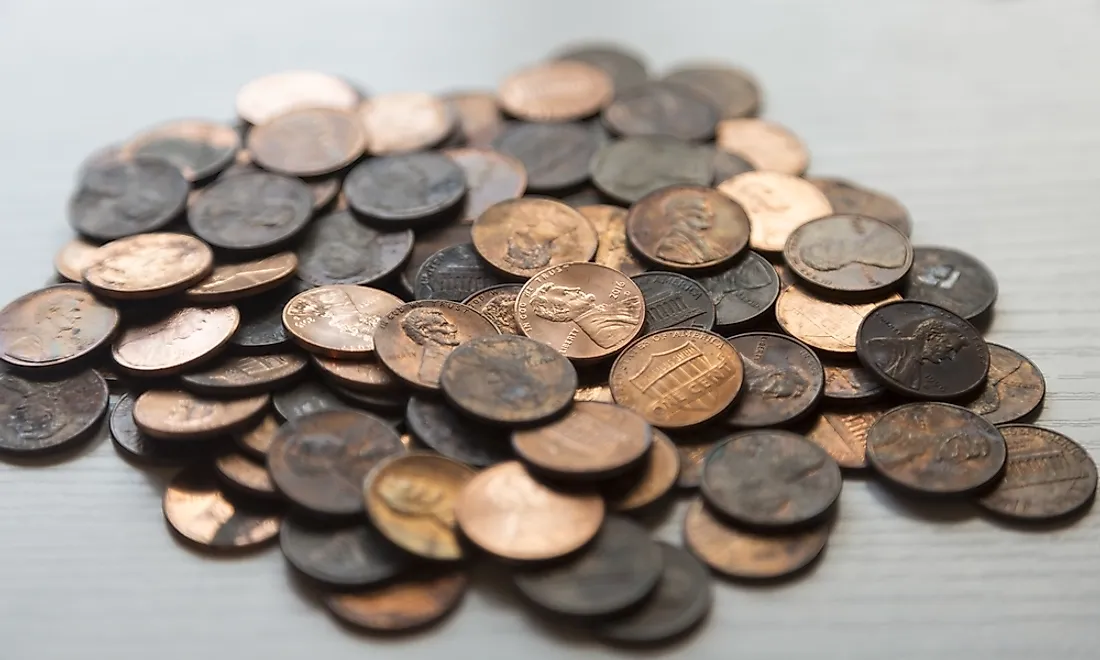When Did The Penny Come Out?

Oirgins Of The Word "Penny"
The history of the penny goes way back in time. First off, looking at the origin of the word “penny”, it is said to be derived from the word pennige from Old English. It shares its origins with the German word pfennig. During the old times, the word pennige, the German word pfennig, the Swedish word penning, together with all the other variations of the word “penny” which Europe used, meant any coin or legal tender and was not restricted to lesser denominations.
The word “penny” got its abbreviation d. from a Roman coin called denarius made of silver. The denarius coin was introduced during the Second Punic War around 211BC and lasted until the year 244AD where Antoninianus took precedence. The use of the abbreviation “d” in British pennies also proves its legacy. The denarius is in the Bible as being the tribute penny in the book of Mathew in the passage about giving unto Cesar what belongs to Cesar.
The English penny was introduced in the year 790AD by Offa of Mercia who was the king of the Anglo-Saxons. The whole coin was made using silver and weighed about 1.3 to 1.5 grams.
History Of The US 1 Cent
The US penny is usually referred to as the “one-cent piece” and became the first currency used in the USA, and it is said to symbolize the country’s spirit. In 1787, Benjamin Franklin came up with a design of the first pure copper US cent. It was named the Fuggio cent and had a picture of the sun and a sundial together with a message that read “Mind Your Own Business.” The coin had an image of a chain that encircled the words “We Are One.” The chain had 13 links which represented the 13 American original colonies. The phrase “a penny saved is a penny earned” is also said to come from Benjamin Franklin.
The next cent produced in the US was the Flying Eagle cent in 1856 made of 88% copper and the rest made of nickel. Next came the Indian cent in 1859 and featured an Indian princess on it. Most of these cents were produced during the Civil War as wages for the Union Soldiers. Later in 1864, the coins were made of 95% copper and zinc (5%).
The Lincoln Cent
In 1909, the Lincoln cent was produced to replace the Indian cent. This coin has ever since become to be known as the US one-cent coin with its symbol being ¢. Abraham Lincoln, the 16th President of the United States, became the first famous figure in history to ever appear on a US penny. It was minted in honor of his 100th birthday. The previous coins featured just representations of the word “liberty.” From 1950 the Lincoln Memorial started to appear in the reverse of the penny together with a tiny statue within it.
Concerning measurements, it is 0.75 inches long and has a thickness of 0.0598 inches. It weighs 2.5 grams and is equal to 0.01 of the USD. It is a copper-plated coin made up of 97.5% zinc and 2.5% copper. The production of copper cents was halted to its high price.
The Lincoln cent would however not be produced were it not for Theodore Roosevelt. The designer of the coin was a young man named Victor David Brenner (Lithuanian-born Jew) who had migrated to the US and later became one of the most talented designers in the country. Roosevelt had wanted to change the design of the American pennies and came to know of Brenner’s abilities in New York. He saw a picture of Lincoln drawn by Brenner on a house, and he was amazed by the art. Roosevelt decided that the Lincoln cent should be made using Brenner’s artwork and should be ready by the time Lincoln’s 100th birthday arrived. The image of Lincoln on the Lincoln cent therefore ever since 1909 has been based on the plaque drawn by Brenner. Before 1909 public opinion was against the idea that portraits should appear on coins, but this opinion changed due to the celebrations of Lincoln’s 100th birthday.
The Lincoln cent had the motto “In God We Trust” for the first time in a US currency of any denomination. The use of this motto was finally made official by the US Congress on March 3, 1865. In honor of Lincoln’s 200th birthday in 2009, four pennies with different designs were produced, and in 2010 the Union Shield was introduced to be on the reverse side of the coin. This shield symbolizes Lincoln’s idea of uniting the country.











